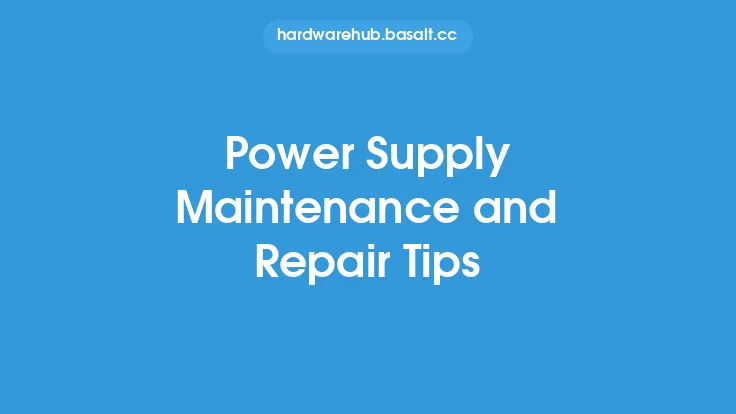When it comes to maintaining and repairing graphics processing units (GPUs), having the right tools is essential. Whether you're a seasoned technician or a DIY enthusiast, the correct tools can make all the difference in ensuring your GPU runs smoothly and efficiently. In this article, we'll explore the best tools for GPU maintenance and repair, covering the essential equipment you'll need to keep your GPU in top condition.
Introduction to GPU Maintenance Tools
GPU maintenance and repair require a range of specialized tools, from basic cleaning equipment to advanced diagnostic software. The type of tools you'll need will depend on the specific task at hand, whether it's cleaning dust from the GPU's heat sink or troubleshooting complex issues with the graphics card. Some of the most common tools used in GPU maintenance include thermal paste, cleaning solutions, and diagnostic software. In addition to these, you may also need specialized equipment such as torque drivers, screwdrivers, and pliers.
Essential Tools for GPU Cleaning
Cleaning is an essential part of GPU maintenance, and having the right tools is crucial to prevent damage to the sensitive components. Some of the essential tools for GPU cleaning include compressed air, soft-bristled brushes, and cleaning solutions specifically designed for electronics. Compressed air is used to blow away dust and debris from the GPU's heat sink and fans, while soft-bristled brushes are used to gently remove dust and dirt from the GPU's surface. Cleaning solutions, on the other hand, are used to remove stubborn stains and grime from the GPU's surface. When choosing a cleaning solution, make sure to select one that is specifically designed for electronics and is safe to use on the GPU's components.
Diagnostic Tools for GPU Troubleshooting
Diagnostic tools are essential for troubleshooting issues with your GPU. Some of the most common diagnostic tools used in GPU maintenance include GPU stress testing software, benchmarking software, and system monitoring tools. GPU stress testing software, such as FurMark or Unigine Heaven, is used to push the GPU to its limits and identify any potential issues. Benchmarking software, on the other hand, is used to measure the GPU's performance and compare it to other graphics cards. System monitoring tools, such as GPU-Z or HWiNFO, are used to monitor the GPU's temperature, voltage, and other vital signs.
Specialized Tools for GPU Repair
In some cases, you may need to perform repairs on your GPU, such as replacing the thermal paste or reflowing the GPU's solder joints. For these tasks, you'll need specialized tools such as torque drivers, screwdrivers, and pliers. Torque drivers are used to apply a specific amount of torque to the GPU's screws, while screwdrivers are used to remove the screws that hold the GPU's heat sink in place. Pliers are used to grip and bend small components, such as the GPU's heat sink fins. When performing repairs on your GPU, it's essential to use the correct tools to avoid damaging the sensitive components.
Advanced Tools for GPU Maintenance
For advanced GPU maintenance and repair, you may need to use specialized equipment such as rework stations, soldering irons, and thermal imaging cameras. Rework stations are used to reflow the GPU's solder joints, while soldering irons are used to apply new solder to the GPU's components. Thermal imaging cameras are used to monitor the GPU's temperature and identify any hotspots or areas of high thermal stress. These tools require a high level of technical expertise and should only be used by experienced technicians or enthusiasts.
Conclusion
In conclusion, having the right tools is essential for GPU maintenance and repair. From basic cleaning equipment to advanced diagnostic software, the correct tools can make all the difference in ensuring your GPU runs smoothly and efficiently. Whether you're a seasoned technician or a DIY enthusiast, it's essential to invest in the right tools to keep your GPU in top condition. By understanding the different types of tools available and how to use them, you can ensure your GPU continues to perform at its best and lasts for years to come.





